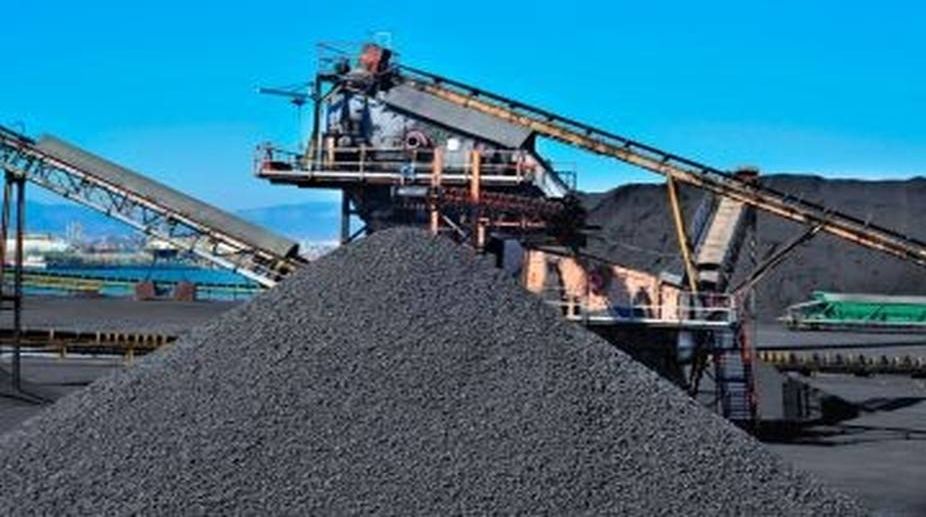Despite muted demand from consumers, downgrading of mines and challenges from the renewable energy sector, the sales outlook of Coal India, the country's largest miner, for 2017-18 looks positive with an expected growth of around 4-6 per cent, analysts and stakeholders say.
They also hold the miner, now contributing 84 per cent of the country's coal production, is better placed to meet the summer demand that is likely to pick up along with power demand.
Advertisement
"Coal India ended the last financial year with around year-on-year 1.6 per cent growth in sales, but in February and March, this was around 5-6 per cent. This indicates sales are picking up.
"This trend is expected to be intact at least in the first (April-June) quarter of the current fiscal. It is likely to dip in the monsoon season, but overall, around 4-5 per cent sales growth is at least expected," Emkay Global's Research Analyst Gautam Chakraborty told IANS.
According to a report prepared by investment services company Motilal Oswal, apparent coal demand growth has seen a decline of 2.4 per cent in 2016-17 on de-stocking, efficiency gains, substitution (pet coke) and rise in the generation of renewable power. However, the real consumption growth still remains at five per cent in the power sector.
"Coal India's dispatches will see an estimated growth of 6.8 per cent to 580 million tonnes (mt) in 2017-18 and by 6.6 per cent to 618 mt in 2018-19, driven by end of de-stocking and substitution of coal and pet coke imports, despite a rising share of renewable energy in power generation," Motilal Oswal Securities Ltd's Senior Vice President of Institutional Research, Sanjay Jain, told IANS.
Seventy-five per cent of the miner's demand comes from thermal power plants. Therefore, the overall coal demand is largely guided by that. The power demand in India has grown at 6-7 per cent in the last two years, but that includes a handsome contribution from the renewable energy sector.
If the trend continues, thermal power demand would witness a lower demand growth in 2017-18 than the overall power demand growth.
"Coal demand growth from thermal power plants, however, may be even lower, since coal stock at such plants has been increasing, which will affect offtake. Overall, we expect coal demand from thermal power to witness a growth rate of 4-5 per cent in the current fiscal unless demand conditions improve materially," ICRA Ltd's Group Head for Corporate Sector Ratings, Jayanta Roy, told IANS.
Coal India, too, is betting on thermal power generation.
"The Central Electricity Authority (CEA) data suggested that thermal power generation was 5.34 per cent higher during the April-February period of the last fiscal over the same period of the previous year. In the current fiscal, the positive trend will continue and we hope for reasonable growth in our dispatches," a Coal India official told IANS.
During 2016-17, production growth of Coal India was low at around three per cent due to slower offtake caused by both muted demand and stockpiles at power plants.
"However, the miner should be in a position to grow its production at a faster rate if demand condition improves. Therefore meeting higher demand in summer should not be a problem for the company," Roy said.
Echoing Roy, other analysts also said supply should not be a constraint.
"Coal India has proved that it could stretch to over 60 million tonnes of production a month, as it did in March, if required," Chakraborty noted.
Apart from power, the other important demand drivers are the steel and cement sectors.
"Steel production in the last fiscal increased at a healthy double digit rate, but that is unlikely to be repeated in the current year. On the other hand, the cement sector would be able to report healthier growth in 2017-18 than in the last fiscal, when demand was adversely affected by the note ban," Roy said.
Chakraborty noted the capacity utilisation of plants for cement, steel, sponge iron and aluminium is on the higher side, which, in turn, would push up the demand for coal.
"It is difficult to judge real consumption in the non-power sector due to absence of inventory data at the consumer end. However, we don't see reasons for a slowdown. Production of cement, sponge iron, aluminum and the like has all increased. The decline of apparent demand can largely be attributed to destocking," Jain said.
However, the miner is likely to face some challenges on its revenue front after the Coal Controller's Organisation downgraded 40.76 per cent of 871 sidings at the company's 386 mines.
Following the reset of the coal grades, the miner said its impact on revenue could only be assessed after coal sampling and analysis over a reasonable period of time.
The miner's net sales realisation (NSR) on FSA (fuel supply agreement) volumes has been disappointing due to stricter enforcement of GCV (gross calorific value) measurements. Thus, despite a price hike of 6.9 per cent in May 2016, the NSR of FSA volumes were broadly flat in the second and third quarter, said the report cited above.
"E-auction coal prices are inching up due to higher international prices. It will increase the net sales realisation in 2017-18 despite no further price hike," Jain said.
He also said the employee cost would not be an alarming factor as it is expected to increase by less than 2 per cent in 2017-18 after rising 14 per cent in the last fiscal.









